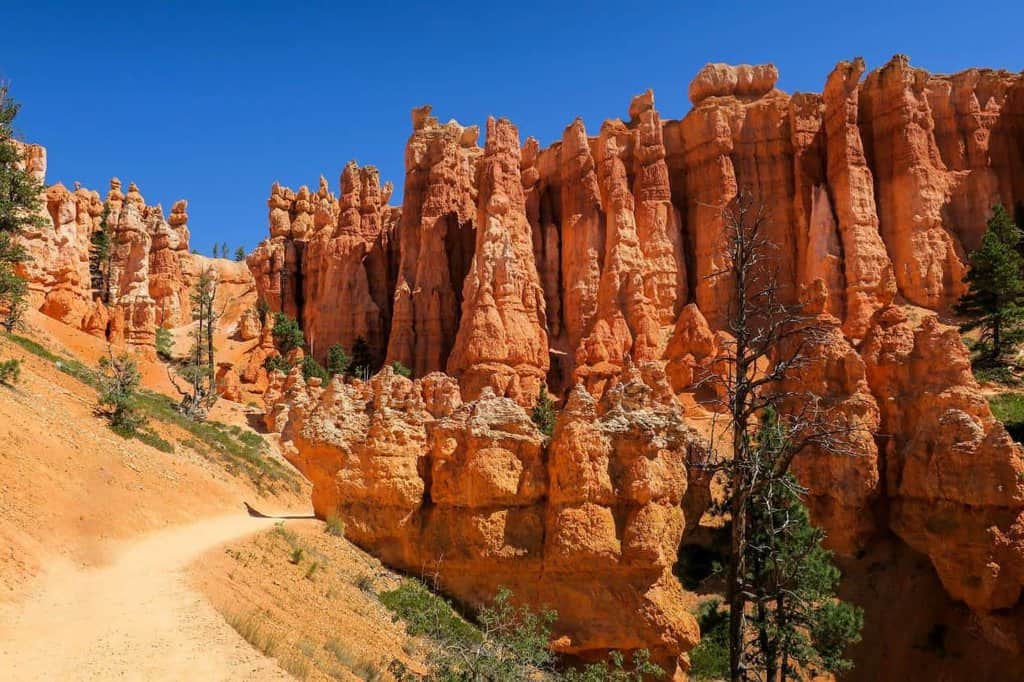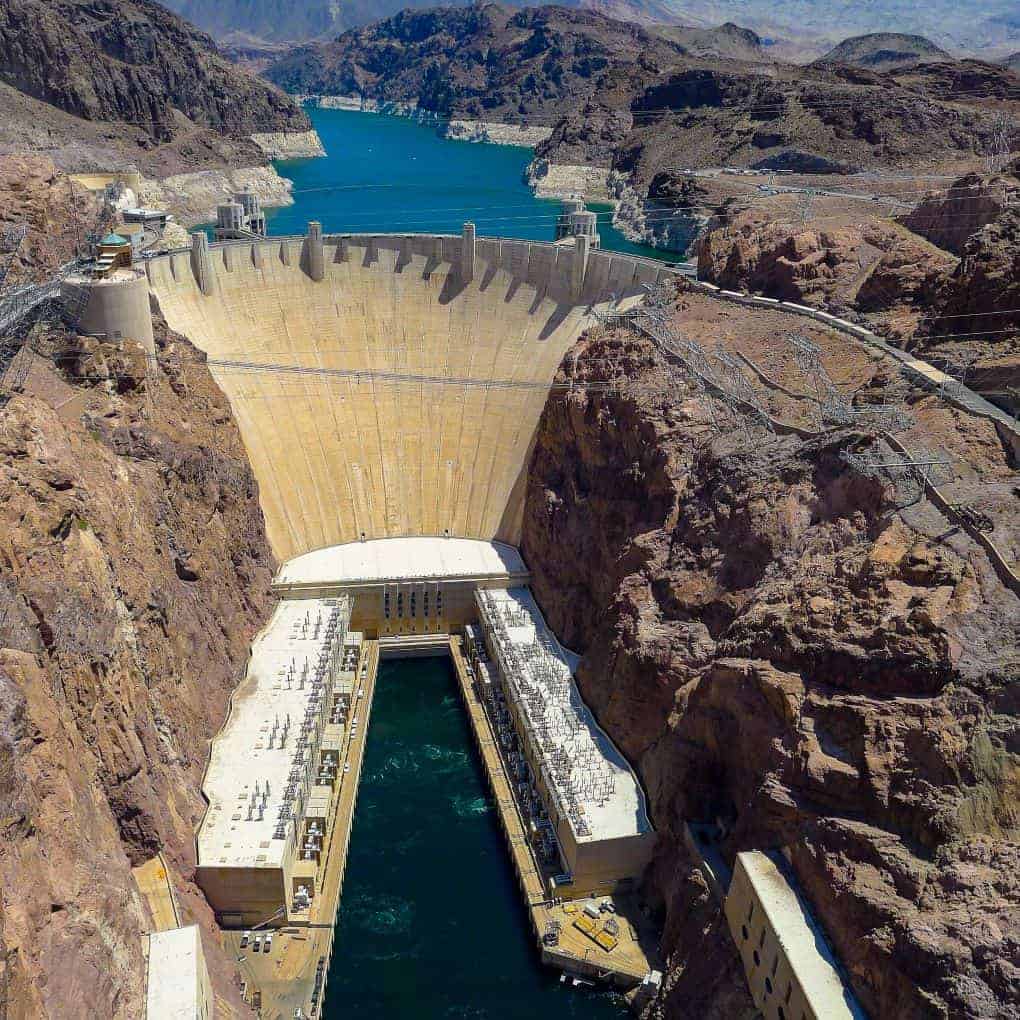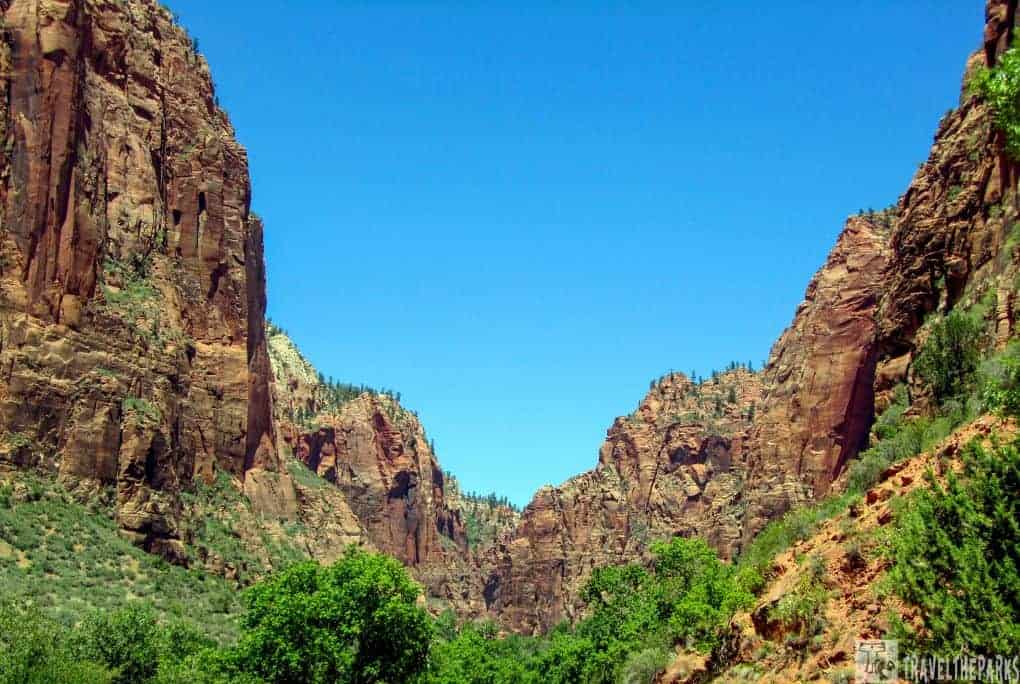Table of Contents
Updated May 21, 2023
Planning a scenic road trip to Bryce Canyon National Park can be full of questions. Where do I start? How many days should I take? Is there a variety of activities and trials I can participate in? What accommodations and dining options are available? Well, I can give you a place to start begin planning. Essentially, we completed our scenic road trip to Bryce Canyon National Park in 2 epic days. Although the park is doable in one day, I recommend multiple days for the most enjoyable experience.
This post may contain affiliate links, meaning if you purchase something through one of these links, we may earn a small commission at no extra cost to you! Read the full disclosure policy here.
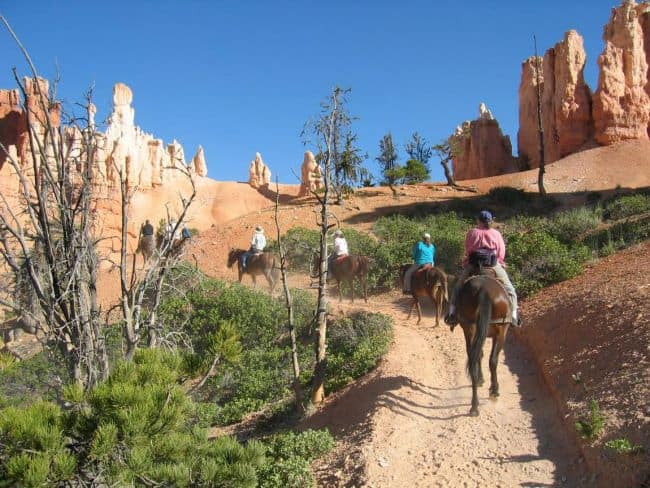
Road Trip Bryce Canyon- 2 Day Adventure Itinerary
Day 1- Start your road trip early in the morning and drive to Bryce Canyon National Park. Reserve accommodations in the park. Drive to the Mossy Cave trailhead, on the east side of Bryce Canyon National Park. Begin your hike to the falls, on the Mossy Cave trail. This is a relatively easy and family-friendly hike. Arrive at the park and check into your accommodation. Begin your adventure by driving to the Bryce Canyon Visitor Center. Take some time to familiarize yourself with the park, gather maps, and get any necessary information from the knowledgeable staff. Later, in the evening, walk the Navajo Loop trail into the Amphitheater when the weather is cooler. Watch the sunset at Sunset Point. A downloadable brochure can help you plan your trail hikes.
Day 2-Watch the sunrise at Sunrise Point. Drive the Scenic Road, stopping at the viewpoints. If time permits, hike a few of the trails along the way. For a different perspective, join a guided horseback ride that takes you deeper into the canyon. This is an awesome way to experience the park from a new vantage point as you traverse the trails on horseback, guided by knowledgeable wranglers.

How do I Get to Bryce Canyon National Park?
- Most visitors choose to drive to Bryce Canyon, as it offers the most flexibility and convenience. The main park road located off the byway accessed Bryce Canyon National Park. The commercialism of Bryce City outside the park is in contrast to the beauty that’s inside the park.
- If you are arriving from Zion NP, follow state Route 9 east through Zion National Park to US-89. Travel north on US-89 to scenic highway Utah 12. Go east on scenic highway Utah 12 to UT-63. Take UT-63 south to Bryce Canyon National Park. The visitor center sits 1 mile inside the park boundary.
- From Capitol Reef National Park, If you are coming from the east, take Utah 12 west from Escalante or Highway US-89 south from Panguitch until you reach the park entrance.

Know Before You Go: Bryce Canyon National Park
- Park Hours & Seasons: Bryce Canyon is open year-round, 24 hours a day. Visitor Center hours vary by season— 8 AM to 6 PM in summer.
- A free shuttle operates April–October along the main park road. It’s important to plan your transportation in advance, especially during peak seasons, as availability may vary. Be sure to check road conditions, park closures, and any travel advisories before your trip.
- Entrance Fees: Standard entrance is $35 per vehicle (valid for 7 days).If you plan to visit multiple parks: one way to support our National Parks is to purchase an annual park pass. America the Beautiful pass gains you entry into all the National Parks and Federal Recreational Lands. The pass costs $80 for one year.
- Best Times to Visit: Late spring through early fall is most popular; winter offers quiet beauty and snow-covered spires.
- Pet Policy: Pets are allowed on paved areas like the Rim Trail (between Sunset and Sunrise Points) but not on most trails.
- Weather & Elevation: The park sits at 8,000 to 9,100 feet, so expect cooler temps—even in summer. Pack layers, especially if you’re visiting in spring or fall.
- Accessibility: The park offers ADA-accessible viewpoints and trails, including Sunset Point and the Bristlecone Loop.
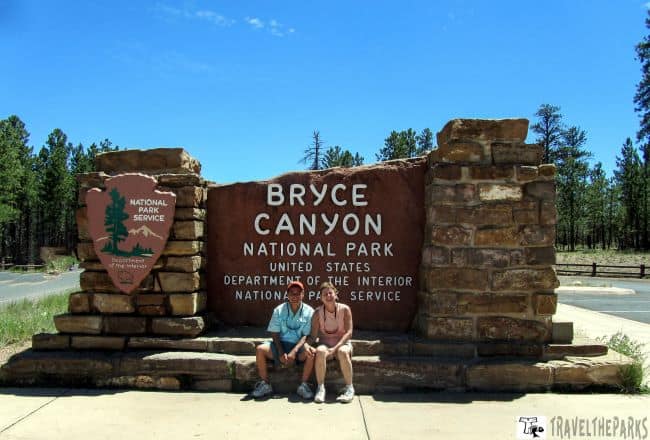
A Little History About the Bryce Canyon National Park
Long before the establishment of the national park, the area around Bryce Canyon was home to Native American clans, including the Paiute people. They inhabited the region for thousands of years, leaving behind evidence of their presence in the form of artifacts and rock art.
In the late 18th century, European Americans began exploring the area. In 1850, Mormon settlers, led by Ebenezer Bryce, arrived in the region. Bryce, for whom the canyon is named, established a homestead near the present-day park boundaries and farmed the land. In 1875, a group of Mormon settlers led by Scottish immigrant John Wesley Powell explored the area and reported back about the stunning hoodoos and canyons.
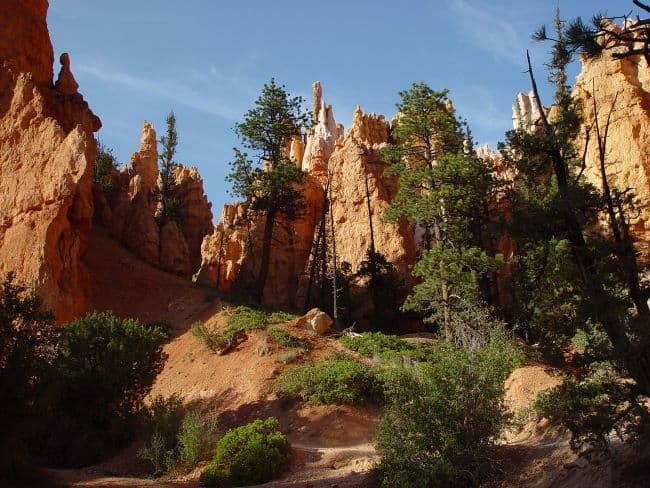
Bryce Canyon’s otherworldly landscape led to its designation as a national monument in 1923 by President Warren G. Harding. The following year, it became a national park, thanks to the efforts of local residents, conservationists, and the National Park Service. Today, it encompasses over 35,000 acres of land.
The Canyon comprises a series of horseshoe-shaped amphitheaters carved the erosional force of frost-wedging and the dissolving power of rainwater that shapes the colorful limestone rock of the claron formation into bizarre shapes including slot canyons, windows, fins, and spires called “hoodoos.” Thousands of delicately carved spires rise in brilliant color from the amphitheaters of Bryce Canyon National Park contributes to the spectacular views.
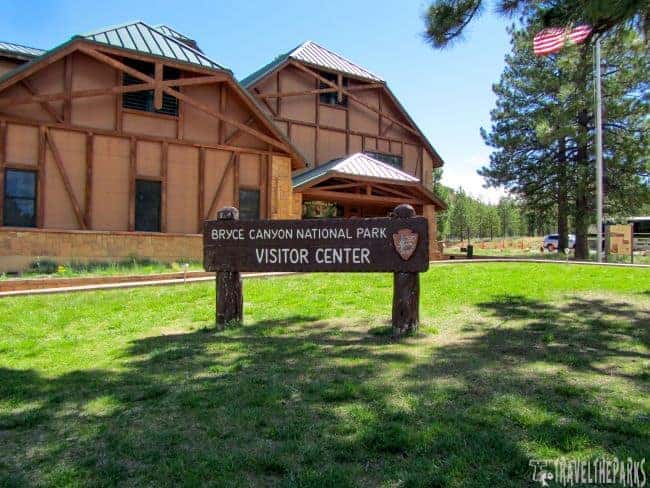
The Bryce Canyon Visitor Center is the perfect place to start your itinerary in Bryce Canyon National Park.
As you approached the park, you’ll catch glimpses of the stunning scenery that awaits you. Your road trip to Bryce Canyon National Park should include a stop at the Visitor Center. Heading to the park’s visitor center, you will learn more about the geology, flora, and fauna of Bryce Canyon. We stopped at the Visitor’s Center to get a map of the park.
The Bryce Canyon Visitor Center is a great place to start your adventure. We recommend taking some time to speak with park rangers who can provide valuable insights and recommendations for the rest of your visit. The Visitor Center also features interpretive exhibits and a bookstore. Browse the exhibits as many include interactive elements, videos, and informative panels. Watch the film “A Song of Seasons“. It is 24-minutes long playing every 30-minutes during the summer. The center is open from 8 a.m. to 8 p.m daily.
Families with children can participate in the Junior Ranger Program, available at the visitor center. Kids can pick up activity booklets and complete various educational activities to earn a Junior Ranger badge and certificate. It’s a fun and educational way for children to connect with the park.
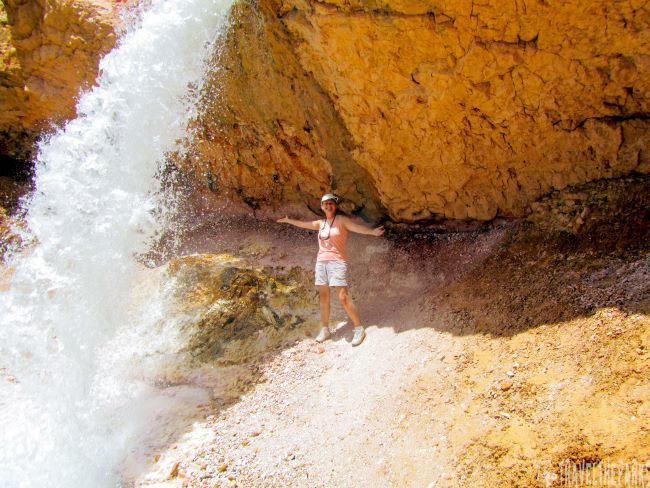
Hidden Beauty in Bryce Canyon: Mossy Cave Trail
We followed Hwy 12 past the cutoff for the Bryce Canyon NP into the town of Tropic. Stopping for a quick lunch, we continued on Hwy 12 to the Mossy Cave Trail. It is one of the few trails in the park that is accessible from outside the park boundaries.
This is a worthwhile side trip. This section of Bryce is often called Water Canyon. Mormon settlers created the stream by diverting water from the Sevier River. The shallow ravine provided a water source as well as irrigation water that could be accessed all year long. They also refer the stream to as the Tropic Ditch.
PRO Tip: The trail can be hot during summer months, so it’s recommended to bring water, sunscreen, and a hat.
The Mossy Cave Trail is a comfortable hike 0.8 miles out and back. The trail is suitable for hikers of all ages and skill levels. At the trailhead, there is a small parking area (mile-marker 18) that can accommodate a few vehicles. Restrooms are available near the trailhead. It follows a small creek and turns into a steady climb. You will cross over two small bridges, take the trail to the left takes you to Mossy Cave. The path is a rugged, steep climb. I was huffing and puffing from the altitude. We maneuvered our way inside the alcove to escape the afternoon heat. This Cave is basically a grotto with some dripping water that allows moss to grow along the walls; the temperature drops a few degrees inside since because of shading. The cave is really not that impressive.
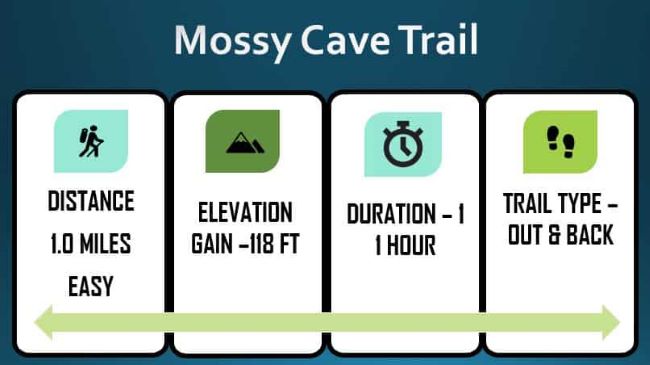
Cooling Off at the Waterfall in Bryce Canyon
Along the trek, it s marked with interpretive signs that provided information about the geology, plants, and history of the area. These signs offer educational insights into the unique features of the trail.
We headed back down the trail, walking toward the waterfalls. As you walk the trail to the falls, you hear the sounds of the stream. The view of the Waterfall from the trail was exquisite with the Hoodoos behind it. The falls cascade 15 feet over a ledge into a circular plunge pool. You can walk to the top of the stream, but we opted to walk under the falls-soaking our heads to cool off in the super cold water. This trail is definitely worth checking out, provided you have the time. You get a fresh perspective of the canyon on this trail.
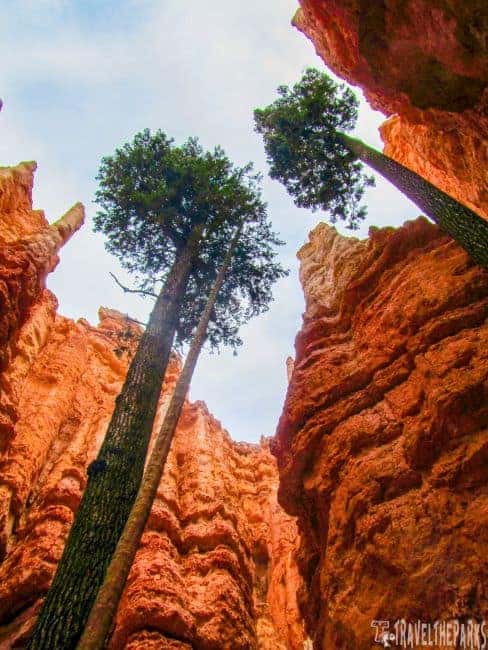
Hiking the Spectacular Navajo Loop Trail in Bryce Canyon
This was our favorite trail of the park. Descending into the heart of the canyon, the Navajo loop 1.3-mile loop ultimately ends at Sunset Point. We started the hike late in the afternoon. The heat of the day was already upon us. Bring proper footwear! Saw many people slipping and struggling as they wore flip-flops or loose-fitting sandals. You really should have sturdy walking or hiking shoes as the trail is loose dirt. A quality trekking stick would be advisable on the switchbacks.

Hiking into The Amphitheater
This hike took us into the heart of the amphitheater. We recommend having a refillable water bottle to quench your thirst in the heat. The hot dry air can take its toll in the summer if you don’t hydrate.
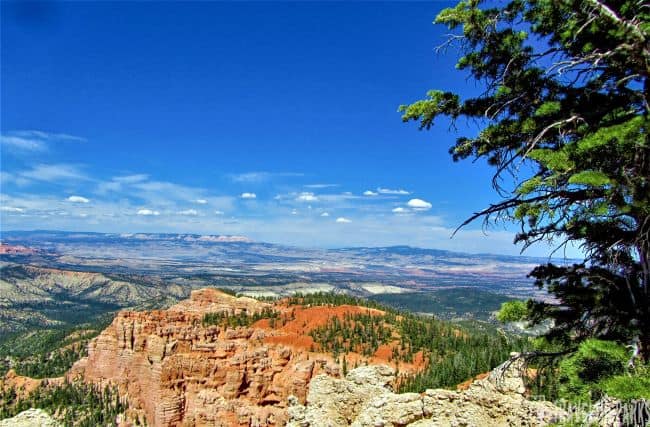
We departed from the top of the canyon rim, beginning at Sunset point. You can access Sunset Point via the park’s free shuttle system or by parking in the designated parking area. The Navajo Loop Trail descends 550 feet into the amphitheater via a set of narrow switchbacks known as Wall Street. Standing between the towering rock walls is something you do not want to miss! In some places, towering Douglas fir trees grow up through the sheer walls. The temperature for us is better on Wall Street. Dropping a few degrees was such a relief. This sheer-walled ravine gives way to the open expanse of the amphitheater. The otherworldly beauty of the hoodoos up close as you wind your way through the narrow passages and towering rock formations is impressive.
At the Twin Bridges, about the halfway point, there is a benchmark here and a nice shady area to hang out and have some lunch. Walking through the amphitheater, the massive, yet incredibly colorful hoodoos proved their point of how insignificant we are!
The Ascent: Thor’s Hammer up to Sunset Point
On the ascent back to Sunset point, Thor’s Hammer, a pinnacle, rises. With its narrow neck supporting a rock, it resembles a hammerhead. A prime example of the park’s distinctive geological features, it is one of the most photographed in the park. Looking west from the trail are grand views into the “Silent City” where rock structures resemble towers and buildings and temples. It was reminiscent for me of something you would see in a “lord of the rings” movie. To the east, we could see the “Temple of Osiris.” Looking out at the countless hoodoos, they seemed to resemble a bustling city frozen in stone. It was a mesmerizing sight to behold.
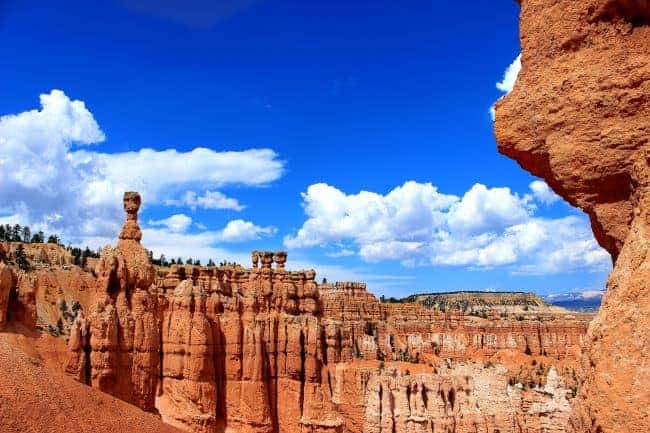
If you are not athletic, have health conditions or are out of shape, this trail may be a bit too tough. An elevation change of 320 feet did not sound like much, but you need to remember what goes down must come back up. The elevation on this trail was oxygen depleting for us as we ascended back out of the canyon. I needed to stop and rest and catch my breath, as the altitude was just too much for this Florida girl. I recommend do not rush it. Take your time. Enjoy it. Bring plenty of water.
The park newsletter shows hikers should travel counter-clockwise, but many people were hiking it clockwise. I prefer clockwise to save the best for last. It may be less steep hiking counterclockwise. If we did the trail again, we would take the Queen’s garden trail as the ascent is easier and more gradual.
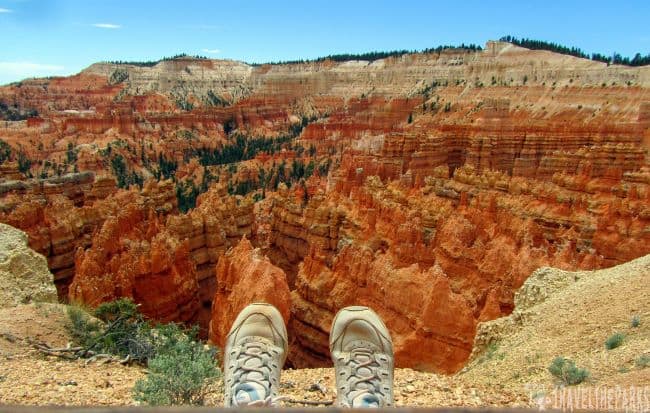
The Ultimate Bryce Canyon Hiking Adventures
Besides the Navajo Loop Trail, there are other hiking trails that provide access into the Amphitheater of Bryce Canyon. Here are a couple of notable options:
- Queen’s Garden Trail: This is a 1.8-mile trail that begins at Sunrise Point and descends into the Amphitheater. It is known for its scenic beauty and the opportunity to see rock formations resembling Queen Victoria and her garden. The trail offers a less steep descent compared to the Navajo Loop Trail, making it a popular choice for hikers.
- Peek-a-Boo Loop Trail: If you are looking for a more extensive exploration into the Ampitheater, then this is one of the best. The 5.5-mile loop trail begins at Bryce Point. It descends into the canyon, passing by stunning rock formations with many inspiring vistas. The well-known “Peek-a-Boo” rock formation, which can be seen from the tail, generated the trail’s name.
Hiking at the Amphitheater can be made longer and more interesting by combining the Navajo Loop Trail with either the Queen’s Garden Trail or the Peek-a-Boo Loop Trail. These trails let you see the unusual geological formations of Bryce Canyon from a variety of angles and let you take in their enchanting beauty.
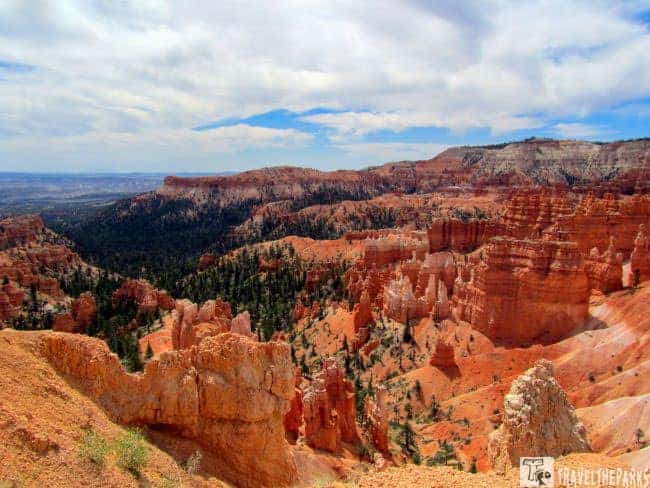
Drive the Awe Inspiring Bryce Canyon Scenic Overlooks
Bryce Canyon Scenic Drive is one of the prettiest roads in Bryce Canyon. Make plenty of stops along the way-get out and take lots of photos. If you aren’t up for hiking or just want to sample Bryce from the road, this is a wonderful trip. The scenic road is 18 miles long (one-way). It stretches from the park entrance station at the north end to its terminus at Yovimpa Point/Rainbow Point. There are multiple turnouts and overlooks along the way, and usually, there is ample parking at each stop. This is an early evening or early morning type of drive…less crowded.

The free shuttle bus runs the scenic road and features a tour that goes to the end of the road twice daily. The shuttle stops at other viewpoints along the way. There are two daily departures, I suggest reservations, and the trip will take three hours. This road is open year-round.
Take your time driving and drink it in. We went to the end of the road, which is Rainbow point, then worked our way back down the road. Frequently stopping at the turnouts for another spectacular view. If you love the geologic displays, please add this national park to your bucket list.
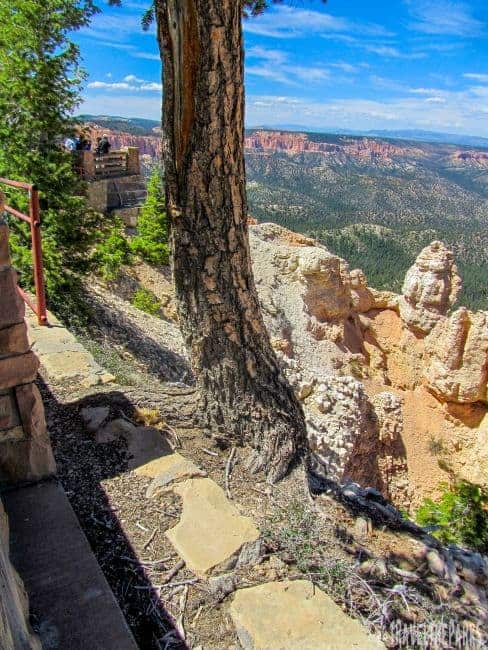
Start at the End of the Road: Rainbow Point
Milepost 18 is at the end of the Bryce Canyon scenic drive. It is the highest of the park’s viewpoints at 9115 feet. From here you can see the distant mountain ranges, forests, and the vastness of the plateau. Since all the overlooks are on the east side of the road, the ranger had told us it was best to drive to the endpoint to begin your tour of the scenic park road. Work your way back towards the lodge. The viewpoints were more accessible. Most of the traffic will go the opposite direction. The Paunsaugunt Plateau, which is blanketed with forests and meadows, dominates the drive. They named the Paunsaugunt for the Paiute word for “home of the beavers.” There was plenty of parking at each overlook. Each panoramic view you witness the diverse landscapes and geological wonders of Bryce Canyon National Park.
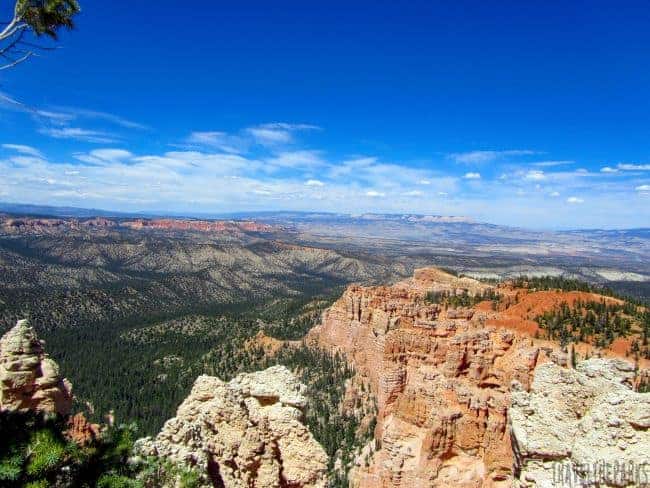
The Bristlecone Pine Loop Trail is an easy hike above the rim of Bryce Canyon. There are several views of the canyon from the trail. The Bristlecone Pine Loop Trail is a 1-mile loop that takes you through a grove of Bristlecone pine trees, some of the oldest living trees on Earth. They are easy to distinguish with their twisted, gnarled trunks, and some have weathered to a beautiful silver-gray color. These trees have adapted to survive in the harsh alpine environment and can live for thousands of years. It is believed that some of these trees are almost 2000 years old. Interpretive signs offer a deeper understanding of the ancient trees and their role in the ecosystem.
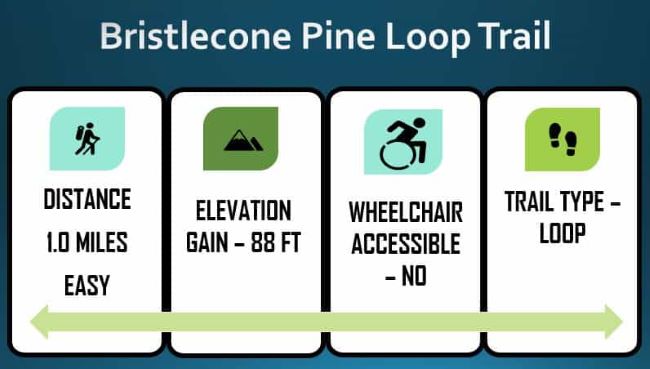
A Majestic Vista of Bryce Canyon’s Splendor Yovimpa Point
It was a perfect place to stop for an hour to gain 360 views of the park. This viewpoint is much less crowded than other viewpoints. Righ next door literally, Yovimpa Point shares a parking lot with Rainbow Point. It is at an elevation of 9100′ is an interesting viewpoint at the southern terminus of the scenic drive in Bryce Canyon National Park. There are views of the Grand Staircase and the Kaibab Plateau. It overlooks a colorful escarpment and a vast forest below. It’s worth visiting Yovimpa Point at different times of the day to experience the varying light and shadows that transform the scenery. Yovimpa Point presents fantastic photo opportunities, whether you’re using a professional camera or capturing moments with a smartphone.
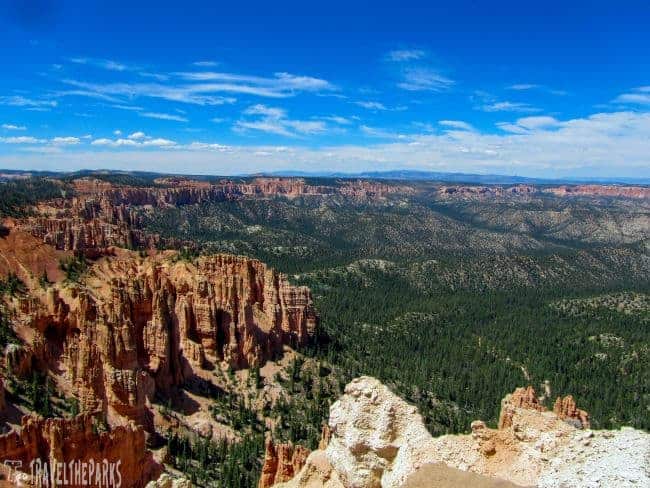
What Exactly is a Hoodoo?
Different natural processes combine to form hoodoos. The Hoodoos in Bryce Canyon National Park typically consist of relatively soft sedimentary rock topped by a harder, less easily eroded stone that protects each column from the elements. They are tall, skinny spires of rock that protrude from the bottom of arid basins and “broken” lands. Hoodoos are most commonly found in the High Plateaus region of the Colorado Plateau. They form hoodoos by two weathering processes that continuously work together in eroding the edges. The primary weathering force at Bryce Canyon is frost wedging. The freeze-thaw process, along with rainwater, erodes the softer soils away from the harder rock, creating the formations you see in the amphitheater.
Hoodoos can vary in size, ranging from small formations a few feet tall to towering spires that can reach heights of several hundred feet. They often take on whimsical and otherworldly shapes, resembling figures, animals, or other objects, leading to their nickname as “fairy chimneys” in some regions.
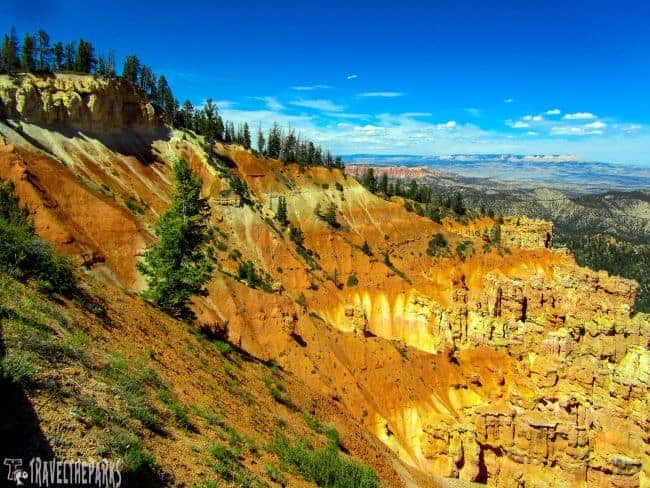
Ponderosa Canyon: A Forested Oasis in Bryce Canyon National Park
This viewpoint sits are an elevation of 8904 feet. It overlooks the brilliant vermilion hoodoos in the foreground and Dixie National Forest and Grand Staircase-Escalante National Monument in the background. The parking lot is in a giant old-growth forest. Far below the rim, this forest is a mixture of Blue Spruce, Douglas Firs, and Ponderosa Pines. We marveled at the harmonious blend of trees against the backdrop of red rock.The paved parking area and viewpoint are wheelchair-accessible. Just to the north of the overlook, one can access the Under-the-Rim Trail by using the Agua Canyon Connector Trail.

The Under-the-Rim Trail is a backcountry trail that spans approximately 23 miles from Bryce Point to Rainbow Point, following the eastern edge of the Bryce Amphitheater. It winds through the rugged and diverse terrain, taking hikers beneath the rim of the canyon. From forests of ponderosa pine and fir trees to open meadows and rocky slopes, each section of the trail presents its own extraordinary beauty. The trail affords opportunities to witness the intricate details of the canyon walls up close and appreciate the ever-changing vistas.
A more secluded hiking experience, the trail will take you into the heart of the amphitheater. We never got to do this trial. Be sure to have a refillable water bottle to quench your thirst in the heat. Hikers should plan accordingly and bring necessary supplies, including water, snacks, and sunscreen. The hot dry air can take its toll in the summer if you don’t hydrate.
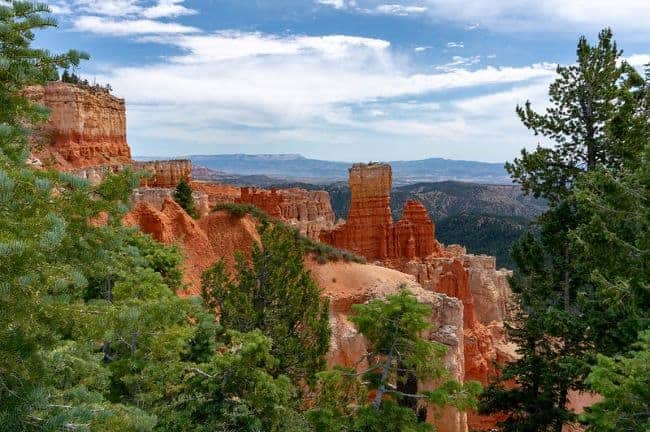
Majestic Vistas: Legendary Agua Canyon in Bryce Canyon National Park
The name “Agua” is actually a misnomer or a case of mistaken identity. The canyon does not have a direct association with water sources or any significant water-related features. Agua Canyon did not derive its name from water, as one might assume.
Agua Canyon has two prominent hoodoos that command the attention of visitors. On the left is the taller of the two sandstone towers, called “The Hunter.” The Hunter’s unique form adds to the allure and visual interest of Agua Canyon. To the right is a hoodoo commonly referred to as “The Rabbit” or “The Backpacker.” It takes its name from its resemblance to a rabbit, with its distinctive shape and contours. The Rabbit stands alongside The Hunter, creating a captivating duo of hoodoos that draw the gaze of visitors. Its presence adds character and charm to the landscape at Agua Canyon.
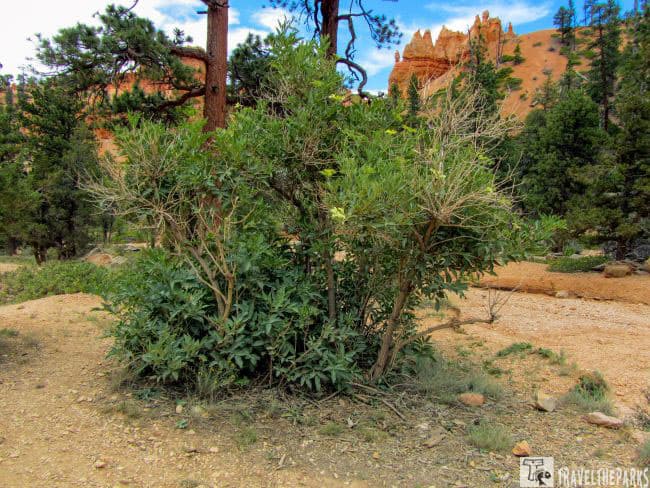
The Indians named the Hoodoos, their belief was dead relatives would enter the rocks. There are spectacular views of the Navajo Mountain on the distant horizon, the evergreen trees contrasting with orange Hoodoos.
It’s important to note that Agua Canyon does not have any facilities or amenities, such as restrooms or water sources. Make sure to use restroom facilities at other locations within the park before reaching Agua Canyon.
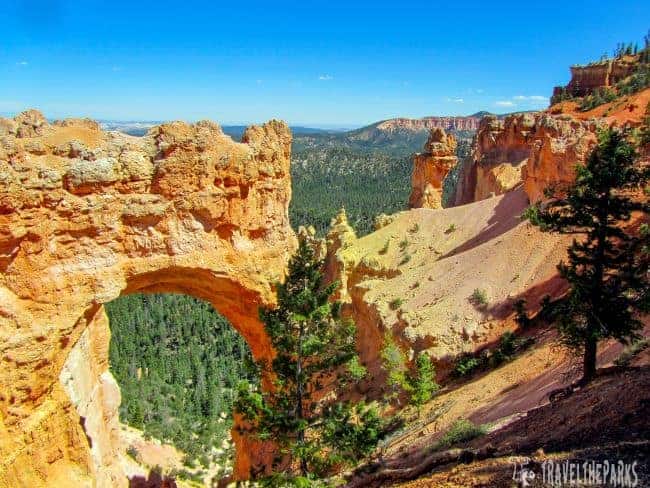
A Captivating Eroded Wonder of the Natural Bridge
Natural Bridge is one of several natural arches in Bryce Canyon. The arch is a result of frost and rain carving the reddest rock of the Claron Formation, which is rich in iron oxide minerals. No steep trail with this landmark, just stop the car, step out, and take your pictures. The sandy rock formation provides a window down into the canyon and is especially remarkable as the sun is rising or setting. The interpretive signs here give you all the information on the formation of the natural bridge. It will eventually collapse.
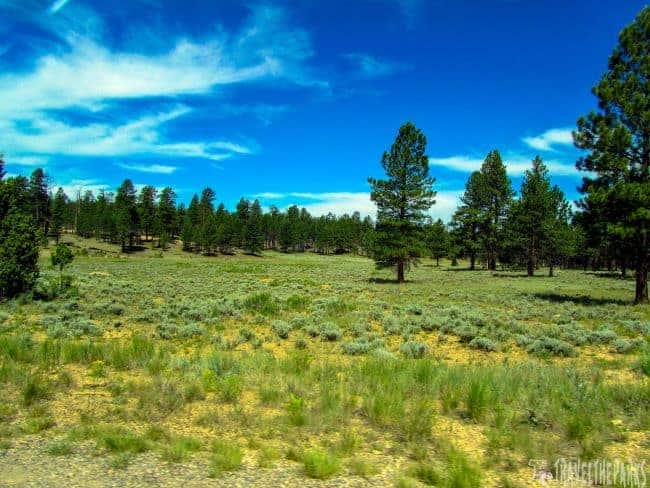
Bryce Canyon Meadow & Swamp Canyon the Serene Beauty of Nature’s Contrasts
Dropping from the higher elevations, the park road opens up upon a lush mountain meadow. It was like looking at a scene from the “Little House on the Prairie”. Here you see a more open and expansive landscape characterized by meadows, forests, and smaller rock formations. There is abundant wildlife here, and we saw a Pronghorn Antelope in the meadow. Swamp Canyon is a lesser-known area within Bryce Canyon National Park that is a contrasting landscape compared to the iconic hoodoos and canyons of the main amphitheater. Visitors can see a small wetland area or swamp in the canyon, which is why it gets its name.
The Sheep Creek and Swamp Canyon connecting trails begin here, and it’s possible to combine the two into a moderately difficult 4-mile loop hike. The trail leading into Swamp Canyon provides an opportunity to escape the crowds and immerse oneself in the peacefulness of nature. There are views of coral-colored hoodoo formations and pine forest, but most visitors stop here to hike the trail to get a better view of the canyon from below the rim. Early morning or late afternoon hikes may increase your chances of spotting wildlife.
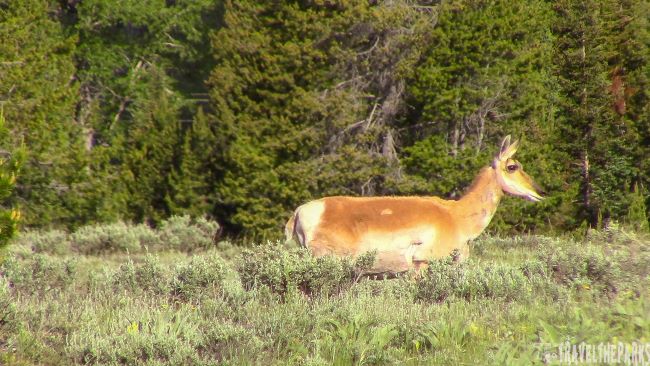
Farview Point and Piracy Point: Panoramic Vistas of Bryce Canyon National Park
Farview Point, an elevation 8819 feet, is the next viewpoint on the scenic drive. There’s a good-sized parking area and a restroom at Farview. These viewpoints offer unobstructed views of the surrounding canyons, rock formations, and the unique geology of the park.
For a different perspective, walk the 70 feet from the parking lot to the edge of the amphitheater. There’s a 1000 foot trail that goes north along the rim of the canyon to Piracy Point. This unpaved trail to Piracy Point is fairly level. You cannot drive to Piracy Point.

Towards the Visitor’s Center, there was an area of fields that were closed off to park visitors. This was to protect the Utah Prairie Dogs. The meadows that border the roads in the northern portion of Bryce Canyon National Park regularly host Utah Prairie Dogs, which are considered a “keystone species.” They make their burrow systems up of several chambers that protect from predators. Prairie Dogs raise young in large complex family colonies, working together to store food for the colony. They introduced prairie dogs into the park in 1973. The Endangered Species Act provides protection for them.
Here’s a link to the full list of Bryce Canyon National Park trails.

What are the Accommodations in the Lodge at Bryce Canyon?
Bryce Canyon is one of the most beautiful national parks, and staying in the park is quite the experience. You can access many of the trails from the Bryce Canyon Road. As the sun goes down, the crowds fade, and you can really enjoy all the peace and solitude that Bryce offers.
The Lodge at Bryce Canyon is the only lodging facility inside Bryce Canyon National Park. You cannot beat the location of this lodge located only a 2-minute walk to the rim-Bryce Amphitheater. Famous park architect Gilbert Stanley Underwood designed The Lodge and cabins, which were built in the 1920s. They declared the lodge and cabins a National Historic Landmark on May 28, 1987.
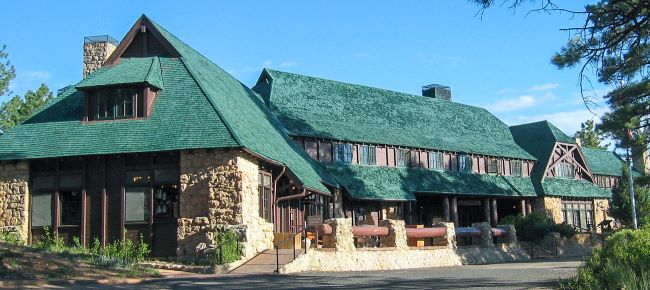
The front desk personnel at the lodge were pleasant and helpful with registration information. In general, the service we received from all lodge employees was both friendly and efficient. Visit the Bryce Canyon Lodging and Cabin Rental page for more information. We booked our reservations for a year in advance. While waiting for check-in, I sat and watched a cheeky chipmunk stealing potato chips. There was wireless available in the main lobby for some connectivity, but it was a pretty poor signal.
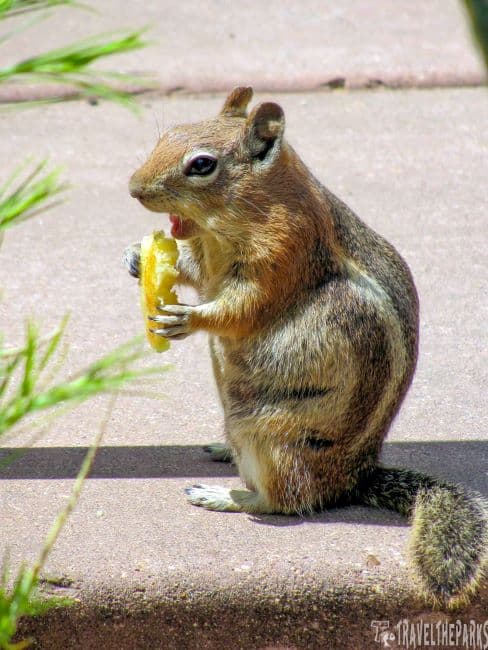
Our Stay in a Sunset Lodge Room
We stayed in the standalone Sunset Lodge, which was very basic. Our room was on the first floor, located beside the stairs. The ice machine was noisy during the day. The room was clean and spacious; nicely furnished in a country motif. We had two queen beds, a bathroom, an extra sink. It came with a microwave, coffeemaker, and refrigerator. There was a screen door that went directly out to a small porch. There was no AC, no TV, no Wi-Fi and you could not get a signal from AT&T however this is the price you pay to be close to this awesome canyon!
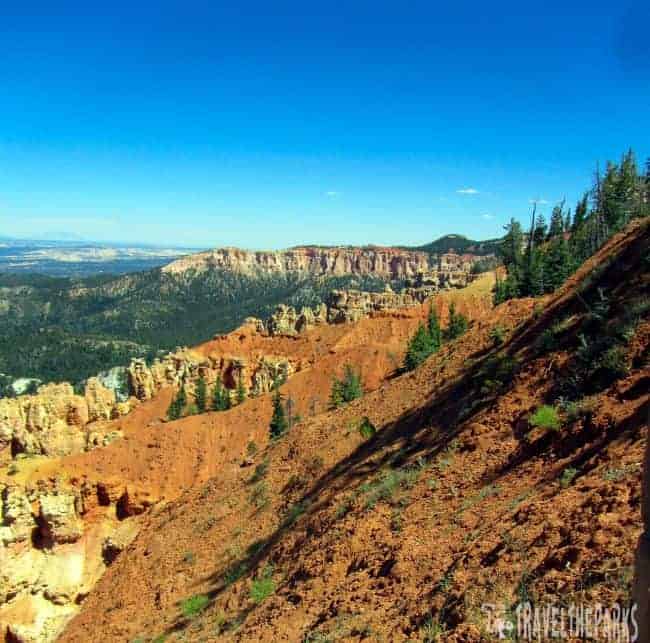
The screened window in the room was nice, letting in the cooler evening air. The nights in Bryce are much cooler thankfully, since there is no air conditioning. If you are on the 1st floor, you can hear EVERY footstep of those above you, so I would recommend asking for the 2nd floor. Late in the evening, we watched the deer eating the grasses planted in the building’s front.
The bonus of staying in the lodge it is only a short walk to the canyon edge. We enjoy a memorable sunset at Sunset Point, where the changing light bathes the hoodoos in a warm glow. After sunset, we head to our accommodation to relax and prepare for another exciting day.
We began our morning exploration of Bryce Canyon by walking to Sunrise Point, one of the park’s iconic viewpoints. Watching the sunrise, we marveled at the first rays of sunlight painting the hoodoos in vibrant hues. Taking in the panoramic views, we snapped some incredible photos.
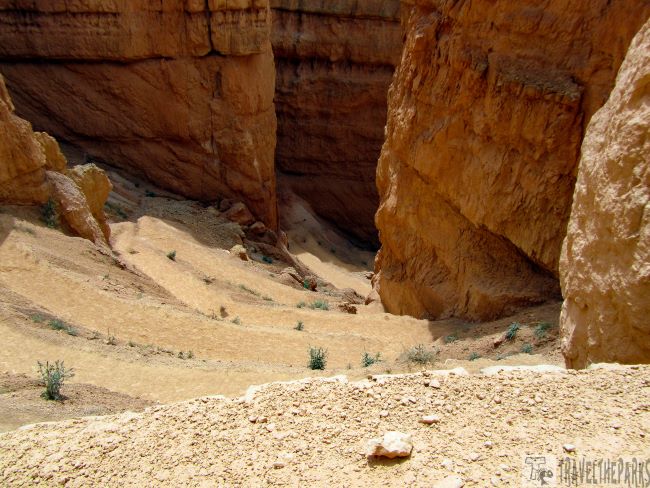
What are the Bryce Canyon Dining Options?
Bryce Canyon National Park offers several dining options to cater to visitors’ needs. While the dining options within the park are limited compared to larger towns or cities, there are still a few establishments where you can find meals and refreshments.
General Store
Built in 1932, architect Gilbert Stanley Underwood designed it. Adjacent to the Bryce Canyon Lodge, the General Store Snack Bar offers quick and casual options such as sandwiches, snacks, ice cream, and beverages. It’s a convenient place to grab a quick bite or refreshments while exploring the park. The store has all the little necessary comforts of home, enough for our restocking needs. We refreshed our cooler with fruit, milk, sandwich meats, and bread. They also sell slices of pizza, hot dogs, and ready-made sandwiches. The prices for everything were reasonable. We purchased ice cream sandwiches, then sat at the rim, marveling at the sunset.
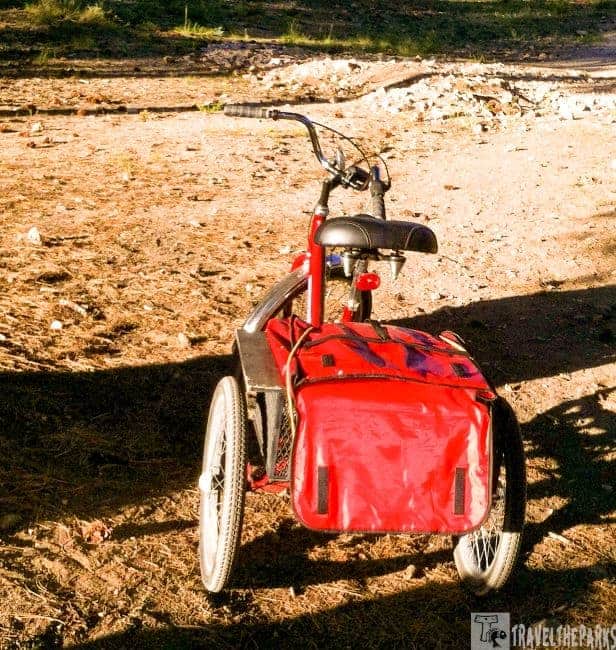
Valhalla Pizzeria & Coffee Shop
This is inside the park in a little building out in front of the Bryce Canyon Lodge. They have outdoor and indoor seating and take out. We sat outside, which is a pleasant setting in the wood behind the lodge. The service was very friendly and the free Wi-Fi was a lucky bonus. Valhalla Pizza & Coffee has good connectivity. We ordered coffee and sat down at a table to review the map and plan our itinerary. We did not order pizza, however it looked amazing. When we left, it was close to sunset, and we saw a couple of deer on the way back to our room. Quick place to grab a muffin or scone plus fresh coffee or hot beverages in the morning before hiking. It’s a popular spot for a casual meal or takeaway items.

Eat at the Bryce Canyon Lodge Dining Room
Located in the lodge, you need to have a reservation for dinner. The Bryce Canyon Lodge Dining Room is a charming dining experience. The menu features a variety of American cuisine, including breakfast, lunch, and dinner options. The lodge provides a cozy atmosphere.

We eat early so we had no crowds to worry about. This dining room is open to the roof with exposed log trusses very rustic. The table setting is very fancy and this may deter some diners, the prices too. The food looked very appetizing and tasted delicious. I had the duck. It was tender and well prepared. My husband had the seafood risotto, which he raved about. The elk chili appetizer was to die for, very good!! The restaurant is convenient for those staying at the lodge and I would eat here again. While eating dinner, we watched the deer walk by the window.
Essential Supplies for Your Road Trip to Bryce Canyon National Park
When visiting Bryce Canyon National Park, it’s important to pack the right supplies to make the most of your adventure. A sturdy backpack is essential to carry your essentials, including plenty of water bottles or a hydration system to stay hydrated during hikes. Wear comfortable hiking boots for proper support on rugged trails and bring a hat and sunscreen to protect yourself from the sun’s rays. A map or GPS device will help with navigation, while a camera is a must for capturing the stunning views. A lightweight jacket is recommended, as temperatures can drop in the evenings, and a first aid kit is always useful for emergencies. Don’t forget a headlamp or flashlight if you plan on exploring early in the morning or after dark. To stay comfortable and safe, consider packing snacks, trail mix, and a multi-tool for any unforeseen situations.
Final Thoughts Road trip to See Awesome Bryce Canyon An Epic 2-Day Adventure
A road trip to Bryce Canyon National Park promises an epic 2-day adventure filled with awe-inspiring landscapes, captivating hikes, and unforgettable experiences. From the panoramic viewpoints to the intricate hoodoos, every moment spent in this natural wonderland will leave you in awe. Pack your camera, hiking gear, and a spirit of adventure as you embark on this remarkable journey to witness the exceptional beauty of Bryce Canyon.
Bryce Canyon is a magnificent park, the scenery is unlike any other Utah 5 park on the Grand circle Tour. Truly different from Zion and Grand Canyon National Parks. Carefully planning your road trip to Bryce Canyon National Park can be a rewarding adventure!
Do you plan to visit Bryce Canyon? Have you already hiked the trails? Tell us what you think, we love it when you SHARE!!

